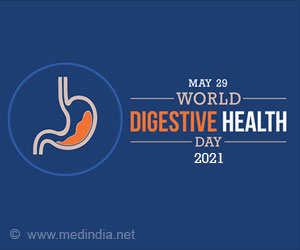New research can be a cornerstone for future clinical studies that could restore the proper functioning of the body clock in the brain, to avoid overeating and obesity.

‘The restoration of daily rhythms before or after the onset of obesity may provide new therapeutic opportunities.’





Historically, it was believed that the master body clock was only located in a part of the brain called the hypothalamus.However, further research over the years has clarified that some control of body’s daily rhythms (hormone levels, appetite etc.) lies in several other parts of the brain and body, including a group of neurons in the evolutionary ancient brainstem, called the dorsal vagal complex (DVC).
Research has also shown that in obesity, daily rhythms in food intake and the release of hormones related to eating, are blunted or eliminated. However, it has not been clear if the malfunctioning of brain centers controlling appetite is a cause or the result of obesity.
This new research conducted at the Jagiellonian University in Krakow in collaboration with the University of Bristol found that high-fat diet fed rats showed changes in the DVC’s daily neuronal rhythms and the response of these neurons to appetite hormones before they started to gain weight.
Thus, the researchers propose that disturbance in the DVC’s timekeeping leads to obesity, rather than being the result of excessive body weight.
Advertisement
To mimic the impact of unhealthy diet on humans, they introduced the new diet to adolescent rats (4-week-old) and monitored their food intake across 24 hours for four consecutive weeks.
Advertisement
Though human and mouse brainstem share common features, the major limitation of the study is its immediate translation to humans.
The peak of the DVC activity was observed at the end of day, which is the rest phase for rodents, but an active phase for people. Thus, it remains to be established if the phase of the brainstem clock is set to day and night, or whether it depends on patterns of rest and activity.
This study opens new research opportunities trying to establish the strategy on how to restore body clock function of the DVC, and therefore help tackle obesity.
Source-Medindia















